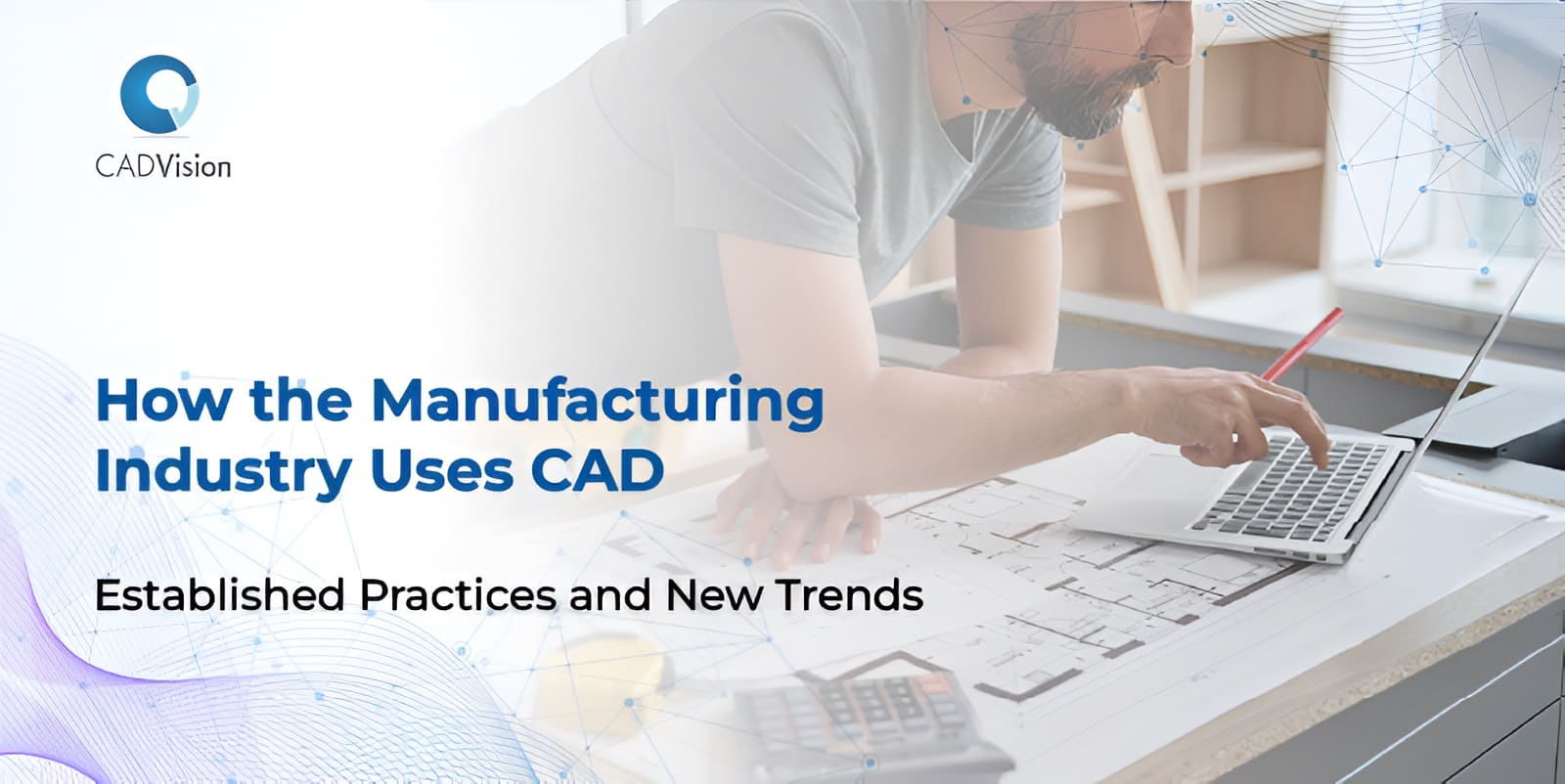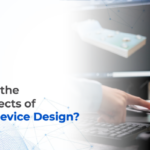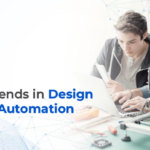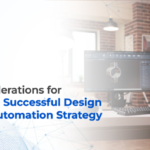Before delving into the intricacies of CAD and its future implications, let’s start with the obvious question: What is CAD in manufacturing?
CAD (computer-aided design) is an indispensable technology in the manufacturing industry. It has revolutionized product development — pivotal in a commercially driven market where efficiency is paramount and dictated by how products are conceptualized, designed, developed, and brought to market.
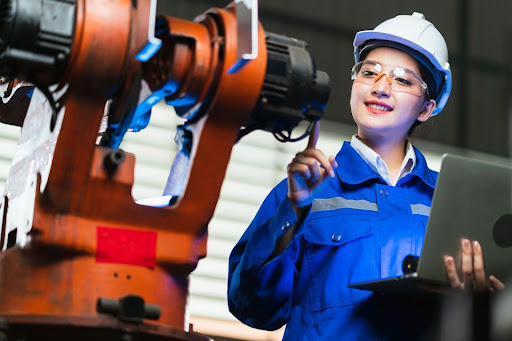
CAD has streamlined the design and production process by enabling the creation of precise three-dimensional models. These models provide unparalleled accuracy and visualization before actual manufacturing occurs, eliminating the need for physical prototypes and significantly reducing associated costs.
The global CAD market is projected to reach US$ 20,039.4 million by 2033, primarily driven by the widespread implementation of CAD solutions in the packaging industry. However, the growing utility of 3D CAD software is evident across the manufacturing, automotive, defense, and aerospace sectors. Key application areas include creating conceptual designs and product layouts and analyzing manufacturing and assembly processes.
In a technologically driven landscape, CAD empowers manufacturers to maximize creativity, enhance productivity, and stay ahead of the curve. CAD seamlessly integrates with computer-aided manufacturing (CAM) systems, optimizing the manufacturing cycle and granting a competitive advantage through faster time-to-market.
This blog will provide an overview of how the manufacturing industry uses CAD for successful innovation.
Computer-Aided Design: How Far Has It Come?
Computer-aided design has dramatically transformed how products are designed and developed in the manufacturing industry.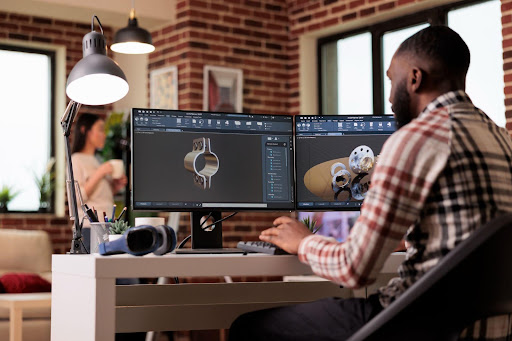
CAD has streamlined the design and production process by enabling the creation of precise three-dimensional models. These models provide unparalleled accuracy and visualization before actual manufacturing occurs, eliminating the need for physical prototypes and significantly reducing associated costs.
CAD software also integrates with manufacturing processes like CAD-Computer Aided Manufacturing (CAM) and computer-aided engineering (CAE). This integration enables seamless design data transfer and facilitates smoother and more accurate manufacturing workflows.
In recent years, CAD has embraced cloud-based solutions, facilitating real-time collaboration and access to design files across geographies. Additionally, advancements in virtual reality (VR) and augmented reality (AR) technologies have expanded CAD’s capabilities, offering immersive design experiences and enhanced visualization.
Benefits of CAD in Manufacturing Industry
Computer-aided design offers many advantages in the manufacturing industry, including:CAD software allows for precise and accurate designs, reducing errors and improving product quality.
CAD facilitates virtual prototyping and simulations, identifying design flaws early on and saving time and material costs.
CAD speeds up product development by streamlining design and documentation processes, resulting in a quicker time to market.
CAD makes it easy to modify designs, explore multiple iterations, and make improvements without significant time and cost implications.
CAD systems enable real-time collaboration among team members regardless of location, enhancing communication and teamwork.
CAD generates detailed design documentation, including drawings and assembly instructions, making it easier to communicate design intent.
CAD is essential for creating customized products catering to diverse market demands.
CAD allows for material selection and usage optimization, reducing material waste and costs.
CAD integrates with Product Lifecycle Management (PLM) tools, managing a product’s lifecycle from design to retirement.
CAD contributes to more sustainable manufacturing practices by simulating and optimizing processes, reducing energy consumption and waste.
Effective CAD usage allows manufacturers to deliver high-quality products more efficiently, gaining a competitive edge.
CAD software, combined with technologies like 3D printing, enables innovative and creative design solutions that are not feasible with traditional methods.

Established Practices in CAD for Manufacturing Industry
Here are some established practices in CAD-assisted manufacturing:Product Design and Prototyping
CAD is essential for designing products and creating prototypes. It’s the go-to tool for creating detailed and intricate product designs. CAD software helps designers and engineers turn their ideas into digital models. These digital models are crucial for testing and adjusting before making physical prototypes. This speeds up the product development process and reduces costs.
CAD offers many advantages for accurate product design. It provides precision, scalability, and an easy-to-use interface for modifying designs. This minimizes errors and ensures high-quality and reliable products.
Quality Control and Inspection
CAD helps maintain quality control by using digital models to compare the physical product with the original design. This allows any discrepancies to be identified and fixed, ensuring the products meet the desired quality standards.
CAD can be easily integrated with inspection tools like Coordinate Measuring Machines (CMMs) and optical scanners. This integration enables automated and precise quality assessments, improving the quality control process.
CAD also helps ensure all products follow specific design criteria and industry regulations. It encourages consistency and compliance through design templates and standards, making reliable products that meet quality and safety standards.
Assembly and Production Planning
CAD is essential for planning manufacturing processes. It helps create assembly line layouts and work instructions and optimize overall processes crucial for efficient manufacturing operations.
CAD simulations are invaluable for optimizing assembly line setups. They help identify bottlenecks, reduce production costs, and improve efficiency. By simulating different scenarios, CAD ensures that production lines run smoothly and stick to schedules.
Using CAD throughout the design-to-manufacturing process significantly reduces production lead times and associated costs. This results in more competitive manufacturing operations capable of efficiently delivering high-quality products.
Documentation and Communication
The manufacturing industry frequently employs CAD software to generate detailed and accurate 2D drawings from 3D models. These drawings, with annotations, dimensions, and other critical details, serve as comprehensive documentation for communication between manufacturing and design teams.
CAD facilitates the creation of assembly instructions and exploded views for assembly line workers to understand how different components function together. It further streamlines procurement and assembly by automatically generating Bill of Materials (BOM) from 3D models.
CAD systems support GD&T (Geometric Dimensioning and Tolerancing) on engineering drawings to communicate design specifications. Many CAD systems offer collaboration features for multiple users to work on the same design while supporting standard file formats for seamless sharing between manufacturers, suppliers, and stakeholders
Experience state-of-the-art digital and engineering services designed for superior medical devices and diagnostics.
New and Upcoming Trends in CAD Technology for Manufacturing Industry
Rapid technological advancements have profoundly impacted computer-aided design for manufacturing. But what’s the future for CAD technology?Let’s explore some upcoming trends set to shaping this constantly evolving industry:
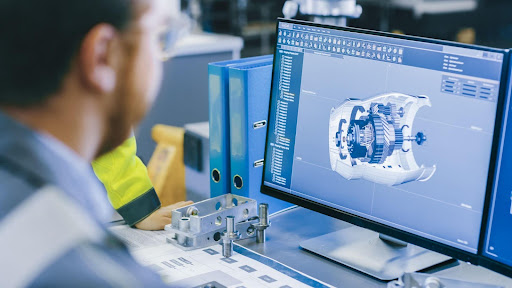
AR combines digital information with the real world, giving a better visual representation of CAD designs. It allows users to see a 3D version of designs and how they’ll look and work in real life before making the product. This improves the accuracy of designs and reduces the time and cost of product development.
Additionally, AR helps design teams collaborate, even in different places, by offering a shared and immersive design experience. This means using AR in CAD technology makes the design process more interactive and efficient.
For example, Augment and similar companies have developed applications that enable designers to easily view their 3D models created with software like SketchUp, Revit, SolidWorks, and other CAD programs.
Virtual Reality
VR’s immersive nature allows designers and engineers to visualize and interact with their creations in a realistic 3D environment before they exist physically. This enhances design accuracy and efficiency and enables potential issues or improvements to be identified early in the design process.
With popular products such as Oculus Rift, PlayStation VR, and Samsung VR, virtual reality technology has found significant usage in the gaming industry. Moreover, VR can potentially revolutionize the customer experience in CAD technology by presenting designs in a more immersive and interactive way.
Industry leaders like Autodesk and SolidWorks are partnering with VR companies such as Virtalis and Mindesk to enhance the customer experience greatly.
Cloud Computation and Integration
Cloud-based CAD systems are changing how complex design projects are done. They let you collaborate and access design data from anywhere in real-time. With the cloud’s powerful computing abilities, you don’t need expensive hardware to use advanced CAD. This means more people can benefit from it.
Cloud resources can effortlessly handle high demand, ensuring optimal performance for your work, regardless of the size or complexity of the design project. Additionally, data management concerns can be eliminated using cloud-based CAD software. You no longer have to worry about saving multiple copies of your designs or overwritten data, as everything you do is meticulously tracked.
Generative Design
Generative Design is rapidly emerging as a revolutionary trend in the field of CAD. This innovative approach leverages algorithms and machine learning to anticipate a designer’s next move, proactively generating design options to meet predefined objectives.
This new approach significantly changes how designers work, shifting their role from being the sole creator to someone who curates the best solution from a range of AI-generated designs.
This technology not only enhances efficiency and productivity but opens up a world of possibilities for future design innovation.
Fully Immersive 3D Experience
CAD technology is expected to offer a completely immersive 3D experience. This means that instead of headsets, designers may use special gloves and goggles to shape models, giving the process a sculpting-like feel.
Voice commands could be integrated into CAD, allowing designers to use their voice to draw and control CAD. However, since CAD requires precision, significant work is still needed to ensure maximum accuracy, whether for touchscreen or voice commands.
Therefore, the key aspects of future CAD technology and software are ease of use and speed, aiming to make the design process faster, efficient, and convenient.
Looking Ahead: The Future of Computer-Aided Design and Manufacturing
The future of computer-aided design and manufacturing is promising as technology advances. Integrating AI, machine learning, and IoT will make these systems even more advanced, allowing for more accurate, efficient, and innovative designs.
The emerging Industry 4.0 will simplify design-to-manufacturing, enabling seamless communication and data exchange. These advancements will revolutionize design, creation, and innovation, leading to a new era of intelligent manufacturing.
CADVision is a reliable technology partner helping businesses transform digitally and develop smart products across industries.
With scalable, modular, and configurable products that efficiently cater to the client’s needs, we aim to offer solutions for various use cases. Our team covers every aspect of product development – software, mechanical, systems, quality, and compliance.
We prioritize user needs and requirements when designing products. With our extensive and diverse experience in product development, we are dedicated to assisting our clients in building high-quality software products and accelerating the time to market.
Get in touch today and kickstart your digital transformation for a better future!
Popular Posts
- What Are the 5 Key Aspects of Medical Device Design?by Admin
- Latest Trends in Design Process Automationby Admin
- Generative AI Revolutionizing Medical Device Innovationby Admin
- How to Design & Develop Custom-Specific Implantsby Admin
- Key Considerations for Planning a Successful Design Process Automation Strategyby Admin
Categories
Tags
3D printing help in the medical field Automation in CAD data migration Business CAD customization services CAD data migration benefits CAD data migration methods CAD data migration planning CAD design automation CAD Design Automation In Medical Implants CAD development services CAD for Medical Device Design CAD Software CAD software development CAD software development companies CAD software solutions Capturing required knowledge Custom CAD data migration tools Custom tools for CAD data translation Data structuring in KBE Design process automation Engineering High-quality CAD data transfer Importance of medical device design IT-Services IT-Solution KBE KBE implementation issues Knowledge-Based Engineering challenges Marketing medical 3D printing Medical Design Software Medical device design Medical device design and development medical imaging software medical software development Neutral formats for CAD data conversion Patient-specific implants Process of CAD Automation Product Development Software Software development for medical devices Streamlined data migration process Successful CAD data migration What is automation design process? What is Design Process Automation

